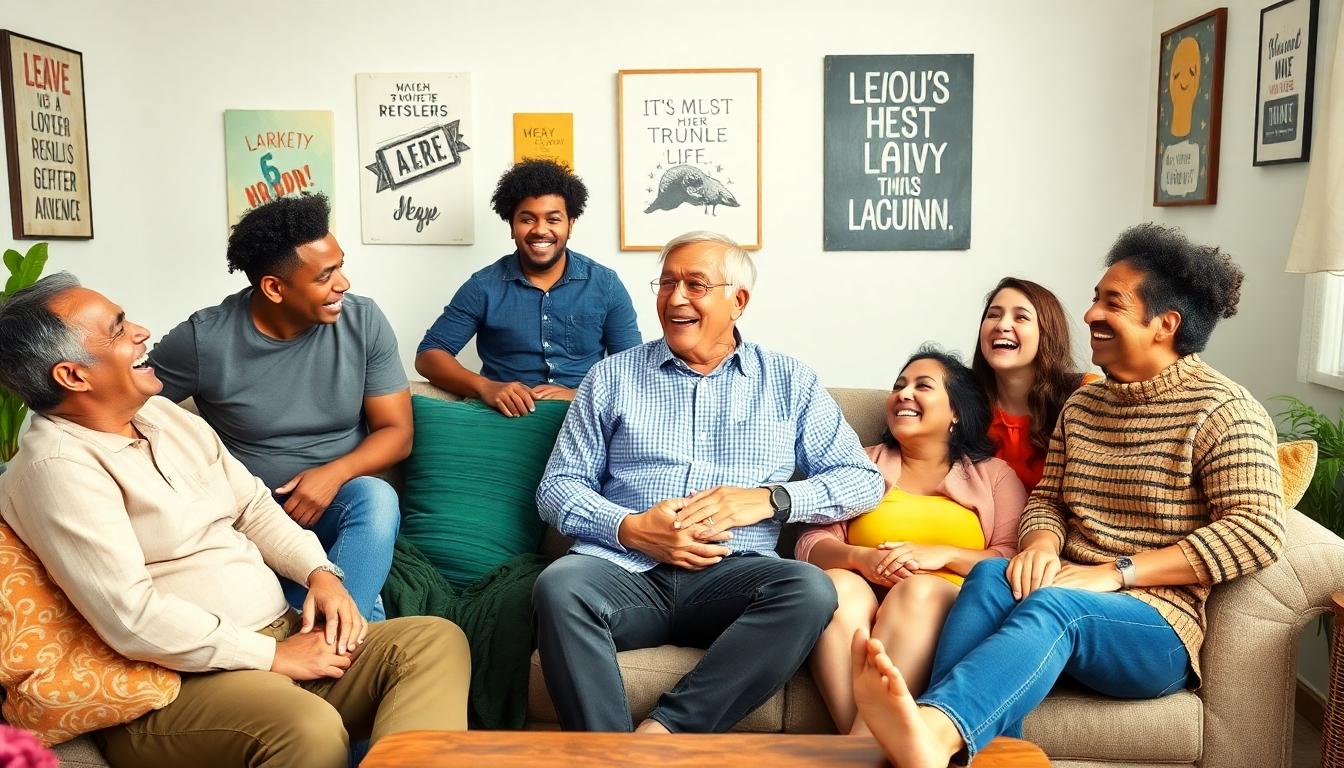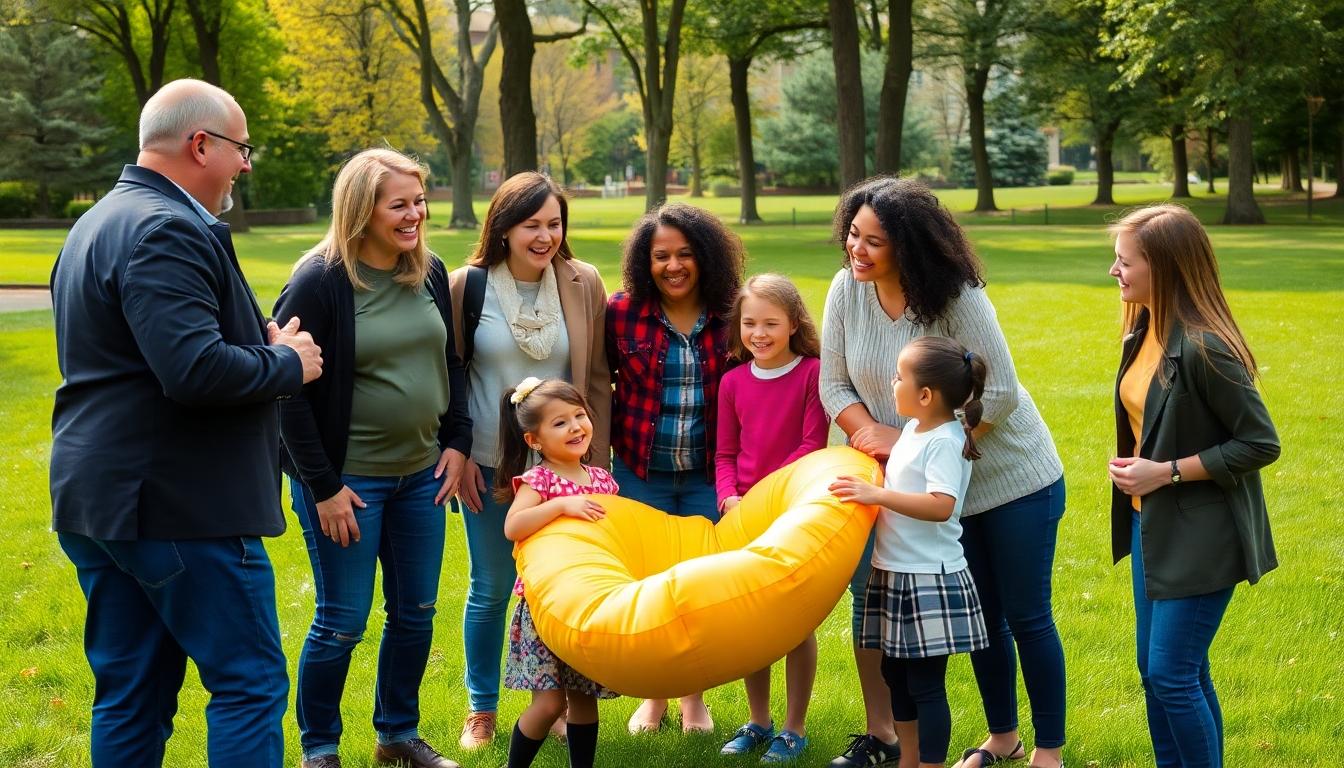Laughter truly is the best medicine, and few things get us giggling quite like a well-timed fart joke. We’ve all been there—trying to hold back tears of laughter when someone breaks wind at the most inopportune moment. It’s humor in its most primal form, transcending age, culture, and social status.
In this text, we’ll explore why flatulence-based comedy has remained a staple of human humor since ancient times. From Shakespeare’s subtle references to modern-day movies dedicated entirely to gaseous gags, we’ll uncover why these jokes continue to resonate with audiences worldwide. Ready to jump into the surprisingly rich history and psychology behind what makes fart jokes so universally funny?
The Science Behind Why Fart Jokes Never Get Old
Fart jokes trigger a exact neurological response that activates our brain’s pleasure centers, according to research from the University of Colorado. Scientists have discovered that unexpected or taboo humor releases dopamine, creating that familiar feeling of delight we experience when hearing flatulence-related comedy. Evolutionary psychologists suggest this reaction stems from our ancestors’ need to diffuse tension in social groups, with bodily function humor serving as a universal equalizer.
The psychological concept of “benign violation theory” explains why we find fart jokes consistently amusing regardless of our age. This theory proposes that humor occurs when something violates our expectations or social norms but in a way that feels safe and non-threatening. Flatulence perfectly fits this model—it’s a mild social transgression that reminds us of our shared humanity without causing actual harm.
Our brains are wired to respond to incongruity, which explains why the unexpected sound of a fart can trigger immediate laughter. Neuroscientists at Stanford University have identified that the element of surprise activates the prefrontal cortex, creating cognitive dissonance that our brains resolve through laughter. The unpredictable timing and sound variations of flatulence make each joke feel fresh, even when we’ve heard similar ones before.
Physical reactions to fart jokes often mirror contagious behaviors in human psychology. Just as yawning spreads through a group, laughter triggered by flatulence humor can cascade through a room, creating a shared experience that strengthens social bonds. Anthropologists have documented this phenomenon across diverse cultures, suggesting it’s hardwired into our social programming rather than being purely cultural.
The taboo nature of bodily functions contributes significantly to the enduring appeal of flatulence humor. Social scientists note that discussing topics traditionally considered inappropriate creates a sense of rebellion that feels liberating, especially in formal settings. Breaking these invisible barriers through humor gives us a momentary escape from societal constraints, explaining why even sophisticated adults can’t help but chuckle at a well-timed toot.
Classic Fart Jokes That Have Stood the Test of Time

Some jokes never lose their appeal, and fart jokes certainly fall into this timeless category. These classics have been making people laugh for generations, proving that flatulence humor truly stands the test of time.
One-Liners That Always Crack People Up
Fart jokes work perfectly as one-liners, delivering quick laughs that catch everyone off guard. The ninja comparison never fails to amuse: “Farts are like ninjas; silent but deadly!” This classic zinger perfectly captures the stealth and impact of the sneakiest emissions.
Relationship humor gets a gaseous twist with: “Why did the fart break up with the burp? It couldn’t handle the pressure!” Alternatively, some versions suggest the fart simply “wanted to be a free agent.” Both punchlines play on the physical nature of these bodily functions.
Toilet humor takes on a literal meaning with: “What did the fart say to the toilet? You crack me up!” This play on words works on multiple levels, making it a go-to joke for bathroom comedians everywhere.
Musicians appreciate the instrumental approach: “What’s a fart’s favorite instrument? The tootsie flute or toot-uba.” These musical puns combine wind instruments with the obvious sound effects for guaranteed giggles.
Paleontology isn’t immune to flatulence humor either. “What do you call a dinosaur fart? A blast from the past!” This joke cleverly combines historical reference with explosive imagery.
Another classic explains: “Farts never get lost because they always follow their nose.” The personification of flatulence creates an instantly amusing mental picture that’s hard to forget.
Inclusive humor appears in the explanation: “Farts smell so that deaf people can enjoy them too.” This joke humorously suggests that nature designed flatulence to be appreciated through multiple senses.
Longer Jokes With Flatulent Punchlines
Longer form jokes build anticipation before delivering their gaseous punchlines. The drunk at the bar story sets up a ridiculous scenario: “A drunk walks into a bar and says, ‘I’ll fart the Star Spangled Banner for two beers.’ The bartender tells him to go for it. The drunk climbs on the bar, and people gather around.” The absurdity of the setup makes the anticipated conclusion even funnier.
Religious humor gets a flatulent twist with: “What did the high priest comment before he flushed the toilet? ‘Holy Crap!'” This joke combines sacred terminology with bathroom activities for an unexpected laugh.
Beach enthusiasts get their own specialized joke: “What do surfers worry about? A shart attack.” This wordplay on “shark attack” introduces an element of bathroom emergency that catches listeners off guard.
Famous Fart Jokes in Pop Culture and Entertainment

Flatulence humor has become a staple across entertainment media, blending vulgarity with clever wordplay to create memorable comedic moments. From Hollywood blockbusters to beloved television series, fart jokes have transcended their taboo status to become recognized elements of mainstream comedy.
Memorable Movie Moments Featuring Flatulence
Movies have embraced flatulence humor for decades, creating iconic scenes that audiences still remember years later. The 1980 film Hollywood Knights featured Robert Wuhl’s character incorporating flatulence during a rendition of “Volare,” setting an early standard for cinematic gas gags. Dumb and Dumber (1994) took flatulence comedy to new heights with Harry’s infamous bathroom scene and Lloyd’s fire-igniting fart, demonstrating how the Farrelly brothers mastered the art of bathroom humor. More contemporary entries like The Heartbreak Kid (2007) pushed boundaries with awkward post-coital “queef” humor that leveraged audience discomfort for laughs. These films prove that flatulence jokes, when executed with proper timing and context, can become standout moments in popular cinema.
TV Shows That Elevated the Fart Joke to an Art Form
Television series have refined flatulence humor through character development and recurring gags. The Simpsons brilliantly used Marge’s rare flatulence moments to subvert her typically prim and proper persona, creating unexpected comedy through character contrast. South Park transformed simple gas jokes into complex satirical commentary, particularly in episodes like “The F Word” featuring Eric Cartman, who regularly weaponizes his flatulence for maximum shock value. Beloved sitcoms such as Friends incorporated more relatable gas humor, including Joey Tribbiani’s exaggerated post-meal “food baby” moments that resonated with viewers through character-driven comedy rather than mere shock value. Online spaces have further evolved flatulence humor with celebrity-themed jokes like “a PhD fart” described as a “highly educated emission” and viral one-liners asking what a fart’s favorite board game is (Clue, naturally). These shows demonstrate how flatulence humor can range from simple physical comedy to sophisticated character work when handled by skilled writers and performers.
Fart Joke Etiquette: When and Where They’re Appropriate

Fart jokes can serve as powerful social connectors when used appropriately. They typically thrive in informal settings where the atmosphere is relaxed and people are comfortable with each other.
Kid-Friendly Versions for Family Gatherings
Family gatherings require a more thoughtful approach to flatulence humor. Clean, innocuous jokes work best when children are present, avoiding anything that might make younger family members uncomfortable. Simple “excuse me” jokes often hit the right note in these settings. Many families find that light-hearted comments about these natural bodily functions can actually create shared moments of laughter without crossing any boundaries. Remember that the goal in family settings is to generate inclusive humor that doesn’t embarrass or exclude anyone from the fun.
When to Hold Back: Social Situations to Avoid
Professional and formal settings should remain fart-joke-free zones. Business meetings, formal dinners, job interviews, and official gatherings call for more restrained humor choices. Research confirms that these jokes are perceived as unprofessional or disrespectful in structured environments. Avoid making flatulence jokes around people you don’t know well, as their comfort level with this type of humor remains unknown. Drawing attention to someone else’s accidental flatulence is particularly problematic unless you’re among close friends who share this exact brand of humor. Understanding your audience represents the key factor in determining whether a fart joke will land with laughter or awkward silence.
Cultural Differences in Fart Humor Around the World

Ancient Origins of Flatulence Comedy
Flatulence humor boasts an impressive historical pedigree dating back thousands of years. The oldest recorded joke, originating from Sumeria around 1900 BCE, involved a woman not farting in her husband’s lap—proving that humans have found bodily functions amusing for millennia. This ancient example demonstrates how fart jokes represent one of humanity’s oldest forms of comedy, transcending time and geographical boundaries while maintaining their appeal.
Regional Variations in Fart Humor
Brazil’s Celebration of Gas
Brazilian culture embraces fart humor with remarkable enthusiasm, incorporating flatulence comedy into mainstream media and social content. Studies published in the Cultural Anthropology Journal connect this acceptance to Brazil’s broader cultural emphasis on humor as a social binding agent. Viral social media content from Brazilian comedians frequently features flatulence jokes that gain international popularity, showcasing how digital platforms help propagate regional humor preferences globally.
Japan’s Artistic Flatulence Tradition
Japan stands out for its historical artistic depictions of flatulence, particularly in Edo-period “fart scrolls” that portrayed exaggerated superheroic farts capable of toppling trees or propelling cats through the air. Modern Japanese humor has evolved to favor more subtle “silent but deadly” punchlines while maintaining appreciation for this bodily function in comedy. Their artistic approach to flatulence demonstrates how different cultures develop unique frameworks for similar comedic concepts.
Maori Folklore and Strategic Farts
Maori traditions feature creative uses of flatulence in storytelling, with tales of Kahungunu using misattributed farts as tactical devices to disrupt rival relationships. These stories reveal how flatulence humor often reflects power dynamics and social hierarchies, functioning as a narrative tool with exact cultural significance beyond mere crude comedy. Anthropologists note how these tales serve as class-leveling devices that temporarily suspend social divisions through shared laughter.
American Pop Culture Approach
Throughout the United States, fart jokes permeate popular entertainment across multiple platforms, from slapstick comedy films to children’s television programming. American humor typically presents flatulence directly for immediate comedic effect rather than embedding it within complex narratives. Social media has amplified these jokes, creating cross-cultural exchanges that introduce American styles of flatulence humor to international audiences.
India’s Discreet Attitude
Indian culture generally views flatulence as natural but rarely discusses it openly in formal settings. This approach creates an interesting tension where fart humor exists but operates under different social constraints than in more openly accepting regions. Cultural norms influence how and when flatulence becomes acceptable comedic material, demonstrating the impact of social expectations on humor expression.
Middle Eastern Historical Accounts
Historical accounts suggest that Libyan leader Gaddafi reportedly exploited the laxative effects of camel milk to induce flatulence in guests for his personal amusement. This anecdote highlights how flatulence humor has occasionally intersected with power dynamics even in regions where such comedy might seem unexpected. The use of bodily functions as tools for social manipulation appears across diverse cultural contexts.
Gender Differences in Appreciation
Research indicates that men disproportionately find fart humor amusing compared to women, potentially reflecting differing socialization patterns rather than inherent gender preferences. These findings suggest that cultural expectations about proper behavior significantly influence who publicly appreciates flatulence humor. Cross-cultural studies show this gender gap appears consistently across diverse societies, though with varying degrees of difference.
Social Bonding Through Shared Taboo
Breaking social taboos through humor serves as a powerful bonding mechanism across cultures, with flatulence functioning as a universal “shareable reminder” of human bodily fallibility. This shared vulnerability creates connections between people regardless of social status or background. Anthropologists have documented how laughter at bodily functions temporarily suspends hierarchical differences, creating moments of human equality through recognition of common experiences.
Digital Globalization of Fart Humor
Social media platforms have revolutionized how regional fart humor spreads globally, enabling previously isolated comedic traditions to reach international audiences. Brazilian comedy sketches, Japanese artistic interpretations, and American pop culture references now circulate worldwide, creating unprecedented cross-cultural exchange. These platforms normalize diverse attitudes toward bodily functions by exposing audiences to multiple cultural frameworks for understanding flatulence humor.
How to Craft the Perfect Fart Joke for Any Audience

Understand the Universal Appeal
Fart jokes work because they tap into universal relatability. We all experience flatulence, making these jokes instantly relatable across cultures and age groups. The benign violation theory explains their effectiveness – they break social norms in a harmless way that triggers laughter rather than offense. Historical evidence supports this timeless appeal, with the oldest recorded joke dating back to 1800 BCE Sumerian culture featuring flatulence as the punchline.
Master the Structure
Every great fart joke follows the classic joke format of setup and punchline. The setup introduces a scenario or establishes context, while the punchline delivers the unexpected twist that subverts expectations. For longer jokes, incorporate jab lines (mini-jokes) before the main punchline to build anticipation. Keeping your jokes concise ensures maximum impact, as unnecessary words can diminish the surprise element that makes flatulence humor effective.
Tailor to Your Audience
Children’s fart jokes should emphasize silliness and absurdity without explicit scatological details. Focus on concepts like “invisible carrots” or other imaginative elements that make younger audiences giggle. Adult-oriented jokes can incorporate more sophisticated elements like social commentary or self-deprecation, comparing flatulence to “tuneful drones” or other creative metaphors. Famous writers like Chaucer and Benjamin Franklin successfully used fart humor in their works, demonstrating its versatility for different audiences.
Use Creative Wordplay
Puns and creative language significantly enhance fart joke effectiveness. Phrases like “silent but deadly” leverage wordplay to elevate simple bathroom humor into something more clever. Exaggerated imagery describing a “thunderous clap” can create vivid mental pictures that amplify the humor. Study examples from classic literature like The Canterbury Tales or Ben Franklin’s writings to understand how wordplay has been used historically in flatulence humor.
Study Successful Examples
Analyzing effective fart jokes helps understand what makes them work. Classic one-liners often rely on unexpected comparisons or clever wordplay. Longer-format jokes build tension before releasing it (appropriately) with the punchline. We recommend examining jokes from both historical and contemporary sources to understand how humor evolves while maintaining core principles.
Revise for Maximum Impact
After crafting your joke, edit ruthlessly for brevity and surprise. Remove any words that don’t contribute directly to the setup or punchline. Ensure your language remains appropriate for your intended audience—avoiding offensive terminology unless explicitly creating content for mature audiences who expect edgier humor. The most effective fart jokes often surprise listeners by taking unexpected turns rather than following predictable patterns.
Balance Humor and Taste
Family-friendly fart jokes require a delicate balance that acknowledges the humor without becoming crude. Adult humor can incorporate irony or sarcasm that might go over children’s heads. Remember that even sophisticated audiences often appreciate well-crafted flatulence humor when it’s presented thoughtfully. The key distinction isn’t eliminating the subject matter but adjusting how explicitly it’s discussed based on who’s listening.
Why Fart Jokes Are Actually Good for Your Health

They Release Stress-Busting Endorphins
Laughter triggered by fart jokes actually releases endorphins in your brain, creating a natural stress-relieving effect. Research shows that these endorphins act as natural mood elevators, helping reduce anxiety and tension in the body. The psychological benefits of humor, particularly the kind of spontaneous laughter that comes from unexpected flatulence jokes, can provide important relief during stressful situations. Finding humor in bodily functions offers an entertaining release that can transform a tense moment into a lighthearted one.
They Strengthen Social Bonds
Fart jokes serve as powerful social connectors by creating shared experiences of communal laughter. When we laugh together at flatulence humor, we’re participating in a universal human experience that crosses cultural boundaries. This shared laughter helps help social bonding among friends, family members, and even new acquaintances. Research on humor indicates that jokes about bodily functions often create an equalizing effect in social groups, reminding everyone of our common humanity regardless of status or position.
They Exercise Your Brain
Captivating with humor, including simple fart jokes, activates important cognitive functions in the brain. Studies associate humor processing, particularly that linked to right hemisphere brain activities, with improved cognitive flexibility. Your brain actually works to understand and appreciate the joke, creating neural connections and exercising mental pathways. The moment of surprise that comes with a well-timed fart joke challenges your brain to resolve cognitive dissonance, which keeps your mind sharp and engaged.
They Normalize Natural Bodily Functions
Fart jokes help destigmatize normal bodily processes, reducing unnecessary shame or embarrassment. By bringing these taboo topics into open conversation through humor, we create healthier attitudes toward natural physiological functions. This normalization contributes significantly to improved psychological well-being by removing the sense that certain bodily functions should remain hidden or unacknowledged. Laughing about flatulence can provide a healthy psychological release that makes such topics less forbidden and more accepted as part of normal human experience.
Conclusion: The Enduring Legacy of Flatulence Humor
Fart jokes remain the great equalizer in human comedy. From ancient Sumerian tablets to viral TikTok videos they continue to unite us through shared laughter that transcends cultural boundaries.
We’ve seen how these jokes trigger dopamine releases activate our prefrontal cortex and create social bonds that strengthen our connections. They’re not just childish humor but a sophisticated psychological tool that helps us navigate social taboos.
Whether you’re crafting the perfect one-liner or enjoying a classic movie scene remember that fart humor serves a purpose beyond mere entertainment. It’s a reminder of our shared humanity our ability to find joy in life’s awkward moments and perhaps most importantly that it’s healthy to laugh at ourselves.
Next time you hear that unmistakable sound followed by laughter know you’re participating in one of humanity’s oldest and most universal comedic traditions.
Frequently Asked Questions
Why do humans find fart jokes funny?
Fart jokes trigger a neurological response that activates the brain’s pleasure centers, releasing dopamine. According to the “benign violation theory,” they create humor by mildly violating social norms in a safe way. Evolutionary psychologists suggest this reaction stems from our ancestors’ need to diffuse social tension, with bodily function humor serving as a universal equalizer that connects us through our shared humanity.
Are fart jokes universal across cultures?
Yes, fart humor appears across virtually all cultures throughout history. From ancient Sumerian jokes to Japanese “He-gassen” art scrolls depicting flatulence battles, these jokes transcend cultural boundaries. While expression varies (Brazil embraces them enthusiastically, India is more discreet), the fundamental humor in flatulence is recognized worldwide, serving as a reminder of our shared human experience regardless of cultural background.
Do fart jokes have any health benefits?
Surprisingly, yes. Laughing at fart jokes releases endorphins that reduce stress and anxiety, functioning as natural mood elevators. They also strengthen social bonds through shared laughter experiences and exercise cognitive functions as the brain processes humor. Additionally, they help normalize natural bodily functions, reducing shame and fostering healthier attitudes about our bodies, which contributes to improved psychological well-being.
What makes a good fart joke?
A good fart joke follows classic joke structure (setup and punchline) while incorporating surprise elements that activate the prefrontal cortex. Effective fart jokes use creative wordplay, maintain brevity, and stay relevant to the audience—children enjoy silliness while adults might appreciate subtle social commentary. The best jokes maintain the perfect balance between being unexpected yet relatable, creating that cognitive dissonance that results in laughter.
Are fart jokes appropriate in all situations?
No. While fart jokes work well in informal settings among friends and family, they’re generally inappropriate in professional and formal environments where they may be perceived as unprofessional or disrespectful. For family gatherings, kid-friendly versions ensure inclusivity. Understanding your audience is crucial—the same joke might elicit hearty laughter in one context and uncomfortable silence in another.
Is there a gender difference in appreciation of fart humor?
Research suggests men generally find fart humor more amusing than women, reflecting different socialization patterns rather than inherent differences. However, individual preferences vary widely regardless of gender. The universality of fart humor ultimately transcends gender distinctions, with appreciation depending more on personal taste, cultural background, and social context than gender alone.
How have fart jokes evolved in modern media?
Fart jokes have evolved from simple gags to sophisticated comedic elements in modern media. Movies like “Dumb and Dumber” feature memorable flatulence scenes, while shows like “The Simpsons” and “South Park” incorporate character development and satire. Social media has revolutionized global sharing of fart humor, allowing diverse comedic traditions to reach international audiences and normalizing various cultural approaches to bodily function humor.
Why do some sophisticated adults still enjoy fart jokes?
Even sophisticated adults enjoy well-crafted fart jokes because they provide a liberating sense of rebellion against social constraints. The taboo nature of discussing inappropriate topics creates cognitive pleasure when done in a safe context. Additionally, these jokes remind us of our shared humanity and vulnerability, allowing adults to momentarily escape societal expectations and reconnect with a more primal, uninhibited form of joy.







